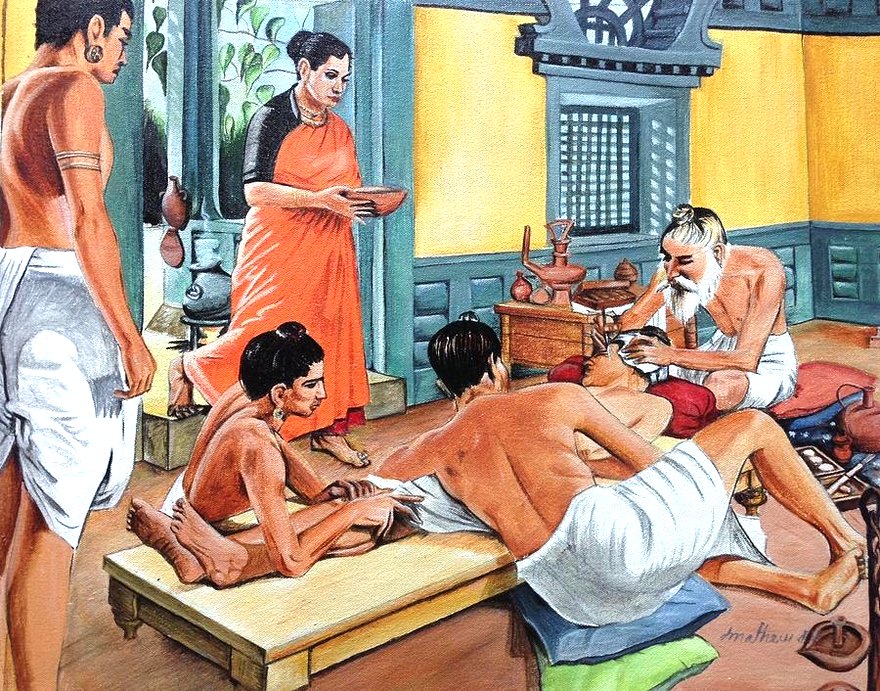
Kanada
Kanad was a sixth century scientist of Vaisheshika School, one of the six systems of Indian philosophy. His original name was Aulukya. He got the name Kanad, because even as a child, he was interested in very minute particles called “kana”. His atomic theory can be a match to any modern atomic theory.
According to Kanad, material universe is made up of kanas, (anu/atom) which cannot be seen through any human organ. These cannot be further subdivided. Thus, they are indivisible and indestructible. This is, of course, as you may be knowing, what the modern atomic theory also says.
Varahamihira
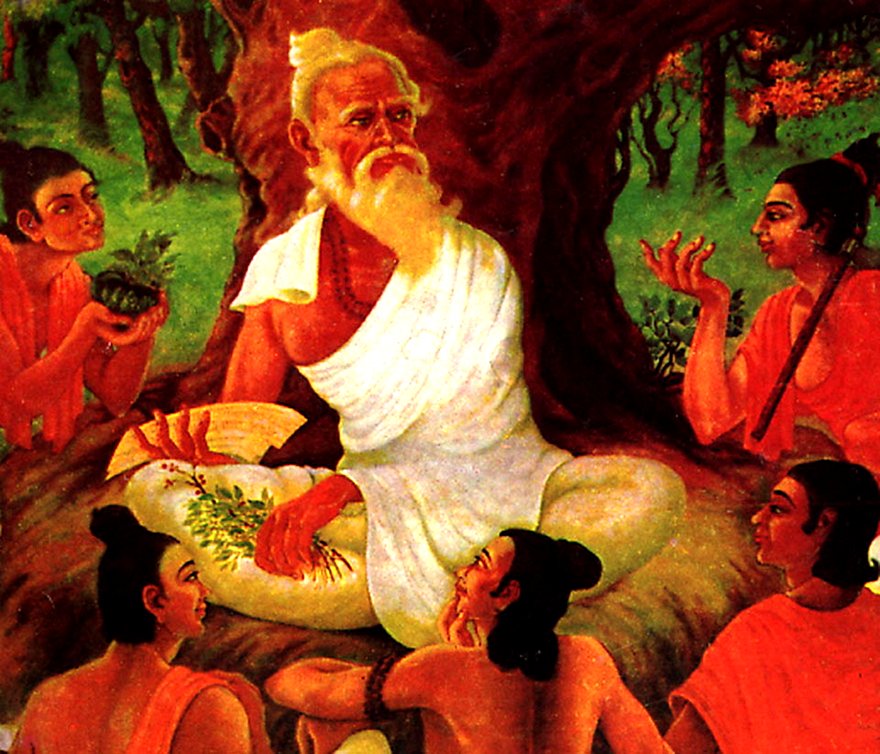
Varahamihira was another well known scientist of the ancient period in India. He lived in the Gupta period. Varahamihira made great contributions in the fields of hydrology, geology and ecology. He
was one of the first scientists to claim that termites and plants could be the indicators of the presence of underground water.
He gave a list of six animals and thirty plants, which could indicate the presence of water. He gave very important information regarding termites (Deemak or insects that destroy wood), that they go very deep to the surface of water level to bring water to keep their houses (bambis) wet.
Another theory, which has attracted the world of science is the earthquake cloud theory given by Varahmihira in his Brhat Samhita. The thirty second chapter of this samhita is devoted to signs of earthquakes. He has tried to relate earthquakes to the influence of planets, undersea activities, underground water, unusual cloud formation and abnormal behaviour of animals. Another field where Varahamihira’s contribution is worth mentioning is Jyotish or Astrology.
Astrology was given a very high place in ancient India and it has continued even today. Jyotish, which means science of light, originated with the Vedas. It was presented scientifically in a systematic form by Aryabhatta and Varahmihira. You have already seen that Aryabhatta devoted two out of the four sections of his work Aryabhattiyam to astronomy, which is the basis for Astrology.
Astrology is the science of predicting the future. Varahamihira was one of the nine gems, who were scholars, in the court of Vikramaditya. Varahamihira’s predictions were so accurate that king Vikramaditya gave him the title of ‘Varaha’.
Nagarjuna
Nagarjuna was a tenth century scientist. The main aim of his experiments was to transform base elements into gold, like the alchemists in the western world. Even though he was not successful in his goal, he succeeded in making an element with gold-like shine. Till date, this technology is used in making imitation jewelry. In his treatise, Rasaratnakara, he has discussed methods for the extraction of metals like gold, silver, tin and copper.
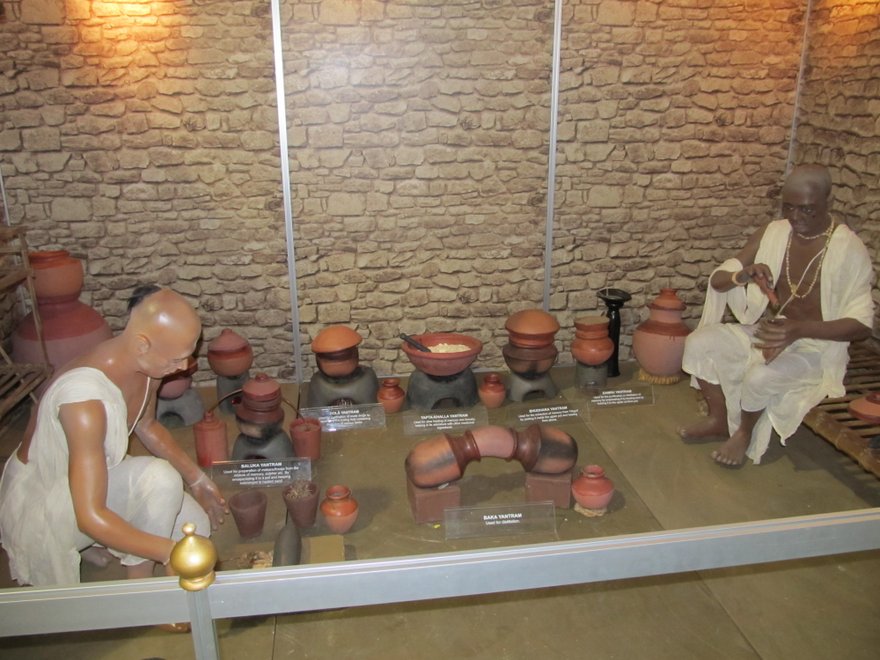
In keeping with the times, Medical Science was also highly developed. Ayurveda is the indigenous system of medicine that was developed in Ancient India. The word Ayurveda literally means the science of good health and longevity of life. This ancient Indian system of medicine not only helps in treatment of diseases but also in finding the causes and symptoms of diseases.
It is a guide for the healthy as well as the sick. It defines health as an equilibrium in three doshas, and diseases as disturbance in these three doshas. While treating a disease with the help of herbal medicines, it aims at removing the cause of disease by striking at the roots. The main aim of ayurveda has been health and longevity.
Science and Medical Science in Ancient India3
It is the oldest medical system of our planet. A treatise on Ayurveda, Atreya Samhita, is the oldest medical book of the world. Charak is called the father of ayurvedic medicine and Susruta the father of surgery. Susruta, Charak, Madhava, Vagbhatta and Jeevak were noted ayurvedic practitioners. Do you know that Ayurveda has lately become very popular in the western world? This is because of its many advantages over the modern system of medicine called Allopathy, which is of western origin.
Susruta
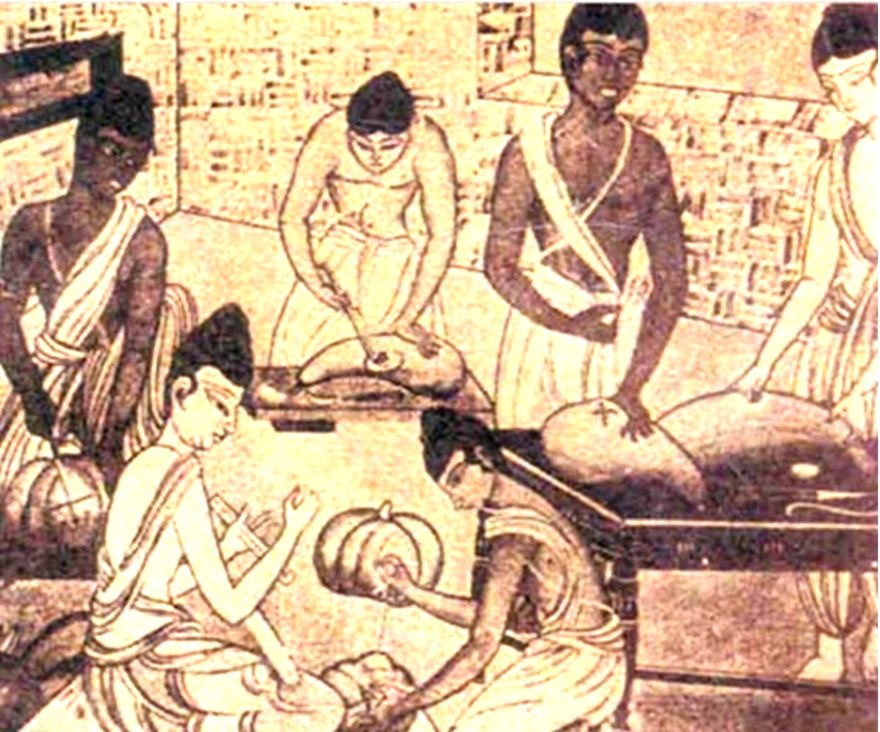
Susruta was a pioneer in the field of surgery. He considered surgery as “the highest division of the healing arts and least liable to fallacy”. He studied human anatomy with the help of a dead body. In Susruta Samhita, over 1100 diseases are mentioned including fevers of twenty-six kinds, jaundice of eight kinds and urinary complaints of twenty kinds.
Over 760 plants are described. All parts, roots, bark, juice, resin, flowers etc. were used. Cinnamon, sesame, peppers, cardamom, ginger are household remedies even today. In Susruta Samhita, the method of selecting and preserving a dead body for the purpose of its detailed study has also been described. The dead body of an old man or a person who died of a severe disease was generally not considered for studies.
The body needed to be perfectly cleaned and then preserved in the bark of a tree. It was then kept in a cage and hidden carefully in a spot in the river. There the current of the river softened it. After seven days it was removed from the river. It was then cleaned with a brush made of grass roots, hair and bamboo. When this was done, every inner or outer part of the body could be seen clearly.
Susruta’s greatest contribution was in the fields of Rhinoplasty (plastic surgery) and Ophthalmic surgery (removal of cataracts). In those days, cutting of nose and/or ears was a common punishment. Restoration of these or limbs lost in wars was a great blessing. In Susruta Samhita, there is a very accurate step-by-step description of these operations.
Surprisingly, the steps followed by Susruta are strikingly similar to those followed by modern surgeons while doing plastic surgery. Susruta Samhita also gives a description of 101 instruments used in surgery. Some serious operations performed included taking foetus out of the womb, repairing the damaged rectum, removing stone from the bladder, etc.
Charaka
Charak is considered the father of ancient Indian science of medicine. He was the Raj Vaidya (royal doctor) in the court of Kanishka. His Charak Samhita is a remarkable book on medicine. It has the description of a large number of diseases and gives methods of identifying their causes as well as the method of their treatment.
He was the first to talk about digestion, metabolism and immunity as important for health and so medical scienc. In Charak Samhita, more stress has been laid on removing the cause of disease rather than simply treating the illness. Charak also knew the fundamentals of Genetics. Don’t you find it fascinating that thousands of years back, medical science was at such an advanced stage in India.
Yoga and Patanjali
The science of Yoga was developed in ancient India as an allied science of Ayurveda for healing without medicine at the physical and mental level. The term Yoga has been derived from the Sanskrit work Yoktra. Its literal meaning is “yoking the mind to the inner self after detaching it from the outer subjects of senses”. Like all other sciences, it has its roots in the Vedas.
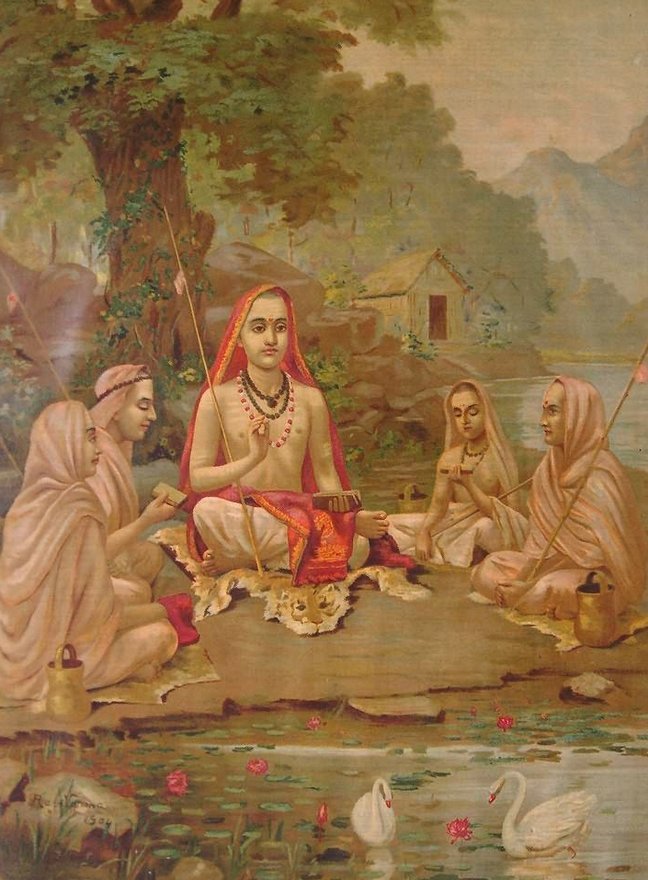
It defines chitta i.e. dissolving thoughts, emotions and desires of a person’s consciousness and achieving a state of equilibrium. It sets in to motion the force that purifies and uplifts the consciousness to divine realization. Yoga is physical as well as mental. Physical yoga is called Hathyoga. Generally, it aims at removing a disease and restoring healthy condition to the body.
Rajayoga is mental yoga. Its goal is self realization and liberation from bondage by achieving physical mental, emotional and spritiual balance. Yoga was passed on by word of mouth from one sage to another. The credit of systematically presenting this great science goes to Patanjali. In the Yoga Sutras of Patanjali, Aum is spoken of as the symbol of God.
He refers to Aum as a cosmic sound, continuously flowing through the ether, fully known only to the illuminated. Besides Yoga Sutras, Patanjali also wrote a work on medicine and worked on Panini’s grammar known as Mahabhasaya.
Source: www.thehansindia.com


Yes Ancient Indians contributed greatly to the knowledge of science. Hindu Dharma is a key concept with multiple meanings in the Indian religions Hinduism, Buddhism, Sikhism and Jainism.
ReplyDeleteIf you want to become a Member of Eternal Hindu Foundation please Visit us at:
Hinduism in India
Stress management is crucial for maintaining good health. Chronic stress can negatively impact both physical and mental well-being. Techniques such as deep breathing, meditation, and time management can help alleviate stress." WasteX biomedical waste
ReplyDelete